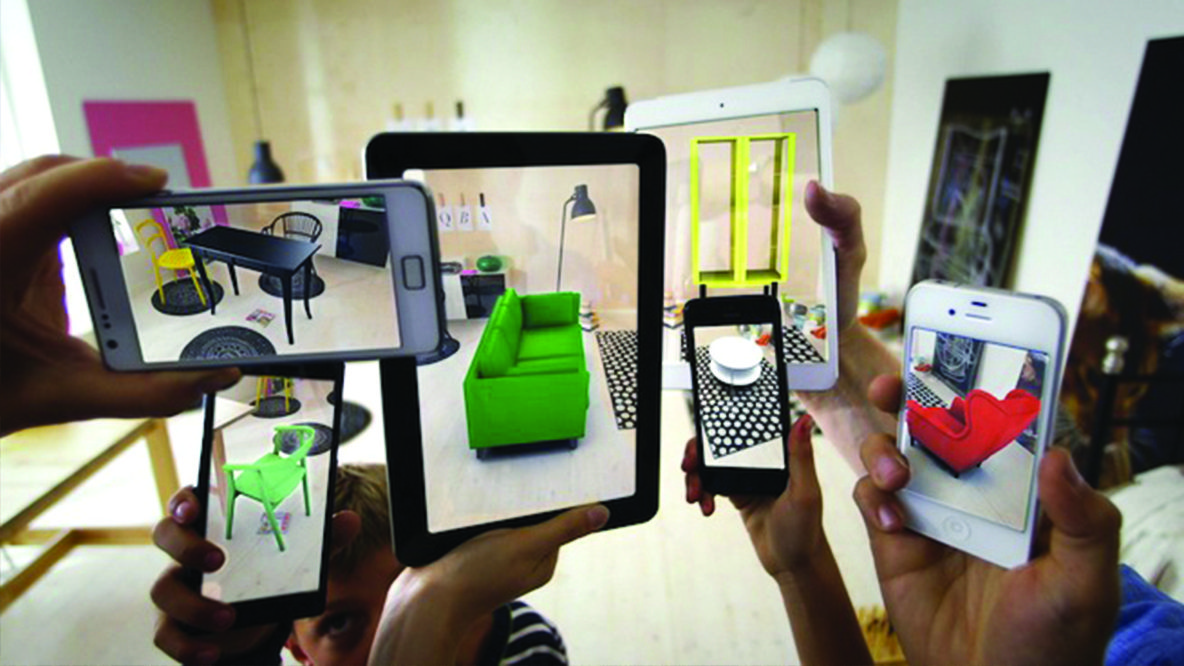Glasses. Lenses. Apps. Games. Ads. These are all examples of products and experiences being shaped by augmented reality (AR). While not entirely new, AR will become an increasingly popular tool used to engage shoppers throughout 2018. Various apps and games are currently being introduced into the App Store and Google Play, and many more are in the process of being developed using Apple’s ARKit and Google’s ARCore. Consequently, incorporating AR technology into new tools or games for phones, tablets, and laptops will become the new norm.
The last few years have brought a glimpse of what augmented reality can do. Popular apps such as the Pokémon GO game, Ikea Place, Fitness AR, and MeasureKit introduced the world of augmented and virtual reality to our actual reality. Unlike VR, which creates a false reality, AR enhances your surroundings and adds to your current reality.
Snapchat
One example of a brand already incorporating AR is Snapchat. Snapchat introduced AR advertising features through its lenses and is launching a new AR Lens Studio. Brands are able to use these lenses to advertise their products as well as their brand name on social media in a more interactive setting. What sets these lenses/filters apart is the more engaging and lively nature of the tool. Customers are generally more inclined to convert when they are given an actual experience. The lenses also make for a more memorable and fun way to target millennials.
Shopping Ads
Augmented reality will also enhance how shopping ads operate. Online shoppers sometimes miss out on the in-store experience when searching for a product or service through the web. The use of AR will help create this virtual experience for online shoppers, increasing engagement rates, building brand awareness, and potentially drive conversions. AR will enhance these ads to be more interactive and memorable because AR makes it possible for users to view much more than a flat image. Imagine being able to view a product in its actual setting, sampling clothing without having to drive to a store, or even taking a 360-degree tour of how furniture will look inside your own home before you decide to make a purchase. In fact, the Ikea Place AR app provides this functionality already. Place allows for users to sample furniture within the comfort of their own homes.
Another app similar to Ikea Place is from Houzz. Its app allows the users to virtually remodel or redecorate their homes before actually committing to these larger, more permanent changes. AR makes it possible to configure a potential purchase from the comfort of your own home, saving you time from having to make returns when a product doesn’t work well, or even previewing renovation changes before they take place. Experiences such as these represent the future of shopping ads.
What to Expect
Apple and Google have already created their own AR software kits and introduced them into their operating software — Apple’s ARKit in iOS11 and Android’s ARCore. Many resourceful apps have already been launched using this technology. In January 2018, Apple announced that many “customers are now enjoying close to 2,000 ARKit-enabled apps spanning every category on the App Store.” From these platforms, we can expect to see more apps include AR features. From games, fitness tracking and coaching apps, to shopping tools and travel apps that include interactive maps — the list of uses for augmented reality goes on and on.
The technology to improve these apps will still be developing well into 2018, but we can expect to see more and more businesses incorporate AR into their marketing strategies. ARe you ready for what 2018 and the world of augmented reality will bring?
